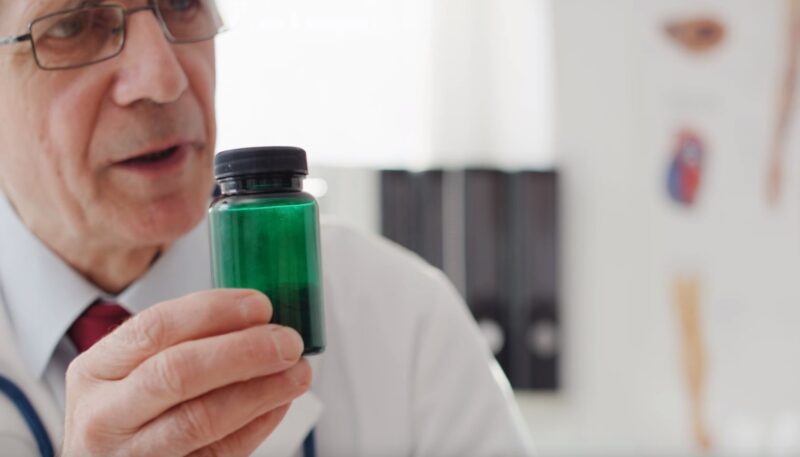Urinary tract infections (UTIs) are among the most common infections, affecting millions worldwide. They happen when bacteria get into the urinary tract and cause an infection in the kidneys, urethra, or bladder.
It’s estimated that this infection causes 8 million office visits and 1 million hospital admissions each year. Thankfully, antibiotics work well to treat UTIs. But, with so many types of antibiotics available, you might be wondering which is the best. For this reason, we’ve put together a list of the top 8 antibiotics.
Key Takeaways
What are the Best Antibiotics for UTIs?
Nitrofurantoin
Nitrofurantoin, marketed as Macrobid and Macrodantin, is often the first-line treatment for acute, uncomplicated lower urinary tract infections like cystitis. It has shown great effectiveness against E. coli, the most common UTI-causing bacterium. Treatment usually spans five to seven days. It’s noteworthy that nitrofurantoin is less likely to cause antibiotic resistance compared to other antibiotics.
Did you know? Nitrofurantoin is advantageous as it concentrates in the lower urinary tract while maintaining a low serum concentration and does not significantly affect bowel flora.
Bactrim/Septra
Also known as Trimethoprim/Sulfamethoxazole. It’s a combination of antibiotics and it’s effective against a broad range of bacteria. It’s typically prescribed for three to seven days. However, Its usage is declining because of increasing rates of bacterial resistance, particularly among strains of E. coli.
Amoxicillin/Clavulanate
This combination has a broader spectrum than amoxicillin alone, adding clavulanate to overcome bacterial resistance. It’s occasionally used for UTIs, especially when specific bacteria are known to be the cause and are susceptible to this antibiotic.
Did you know? Amoxicillin-clavulanate is one of the most frequently used antimicrobials in emergency departments and primary care offices worldwide. It is a combination of two different drugs: amoxicillin and clavulanic acid.
Fosfomycin

Fosfomycin Trometamol, sold as Monurol, is a single-dose antibiotic that’s particularly useful for treating acute, uncomplicated UTIs. This medication functions as an antibiotic by eradicating or inhibiting the growth of bacteria. Also, its one-time dose is convenient for patients, and it shows effectiveness against a wide variety of bacteria, including drug-resistant strains.
Did you know? The intensive and extensive use and misuse of antibiotics over the past 50 years has contributed to the emergence and spread of antibiotic-resistant bacterial strains. This increase and global spread of multidrug-resistant (MDR) bacteria is particularly alarming, and the World Health Organization has identified antibacterial drug resistance as a major threat to global public health.
Ciprofloxacin
Ciprofloxacin, a type of fluoroquinolone, is used for more complicated UTIs and is effective against a broad range of bacteria. But, because of concerns about increasing antibiotic resistance and potential side effects, it’s usually reserved for cases where other treatments have failed. Side effects of Ciprofloxacin may include eye redness, nausea, diarrhea, and a bad taste in the mouth.
Levofloxacin
Similar to ciprofloxacin, levofloxacin is another fluoroquinolone with broad-spectrum antibacterial activity. It’s used for complicated UTIs and pyelonephritis (a kidney infection). Like ciprofloxacin, its use is carefully considered due to its resistance and side effects.
Doxycycline
Doxycycline is utilized in the management of UTIs when standard treatments are not suitable, especially for infections caused by intracellular pathogens like Chlamydia. It inhibits protein synthesis within the bacterial cell, effectively stopping bacterial growth. Notable factors to take into account include sun sensitivity, gastrointestinal issues, and the possibility of affecting oral health in children or pregnant women.
Amoxicillin
Once a frontline treatment for UTIs, the utility of amoxicillin has waned because of increasing bacterial resistance. However, it remains a safe option during pregnancy and for specific bacteria that are known to be susceptible. Its mechanism involves inhibiting bacterial cell wall synthesis, leading to cell lysis and death. Side effects are generally mild but can include a rash and gastrointestinal symptoms.
Did you know? Research has shown that exposure to sub-lethal levels of amoxicillin can lead to an increase in minimum inhibitory concentration (MIC) values, indicating a step-wise increase in resistance in mutant Escherichia coli isolates.
How Do You Know You Need an Antibiotic?

You need to recognize symptoms, such as:
- a persistent urge to urinate
- a burning sensation during urination
- the sensation that you can’t completely empty your bladder
- cloudy or strong-smelling urine
- blood in urine
- pelvic pain (women)
If these symptoms persist for more than 24 hours or worsen, you must seek medical advice. A healthcare provider will typically confirm a UTI through urine analysis, which tests for the presence of bacteria and white blood cells.
The American Urological Association says that about 10 in 25 women and 3 in 25 men will experience symptoms of a UTI during their lifetime. That’s why it’s essential not to self-diagnose or use antibiotics without a prescription, as improper use can lead to antibiotic resistance, rendering standard treatments ineffective for future infections.
A medical professional’s guidance ensures that the use of antibiotics is necessary based on your symptoms and test results, targeting the specific bacteria causing the infection.
What are the side effects?
They can widely vary depending on the specific medication used:
| Side Effect Category | Examples | Frequency | Notes |
|---|---|---|---|
| Gastrointestinal Issues | Nausea, vomiting, diarrhea, and stomach cramps | Common | It affects up to 20% of individuals taking antibiotics. |
| Allergic Reactions | Rashes, itching, and anaphylaxis | Less frequent | Severe cases like anaphylaxis are rare. |
| Neurological Issues | Headaches, dizziness, and confusion | Variable, depending on the antibiotic | Fluoroquinolones may increase risk. |
| Tendon Damage | Tendonitis, tendon rupture | Rare, associated with fluoroquinolones | A warning issued for fluoroquinolones by the FDA |
| Yeast Infections | Vaginal yeast infection | Common, especially in women | Occurs due to disruption of natural vaginal flora |
| Disruption of Gut Flora | Diarrhea, Clostridioides difficile infection | Common with broad-spectrum antibiotics | Can lead to significant discomfort and secondary infections. |
FAQs















